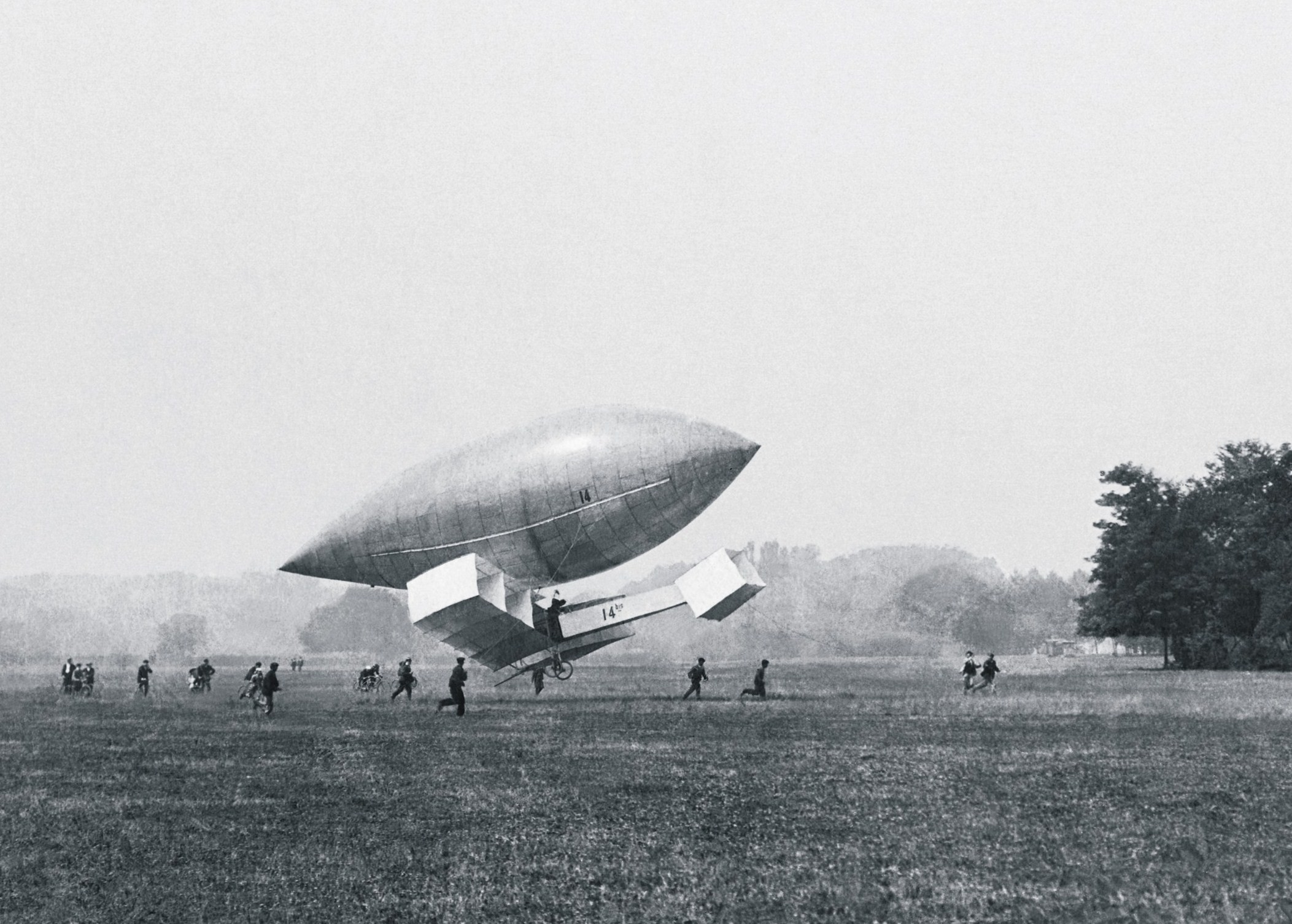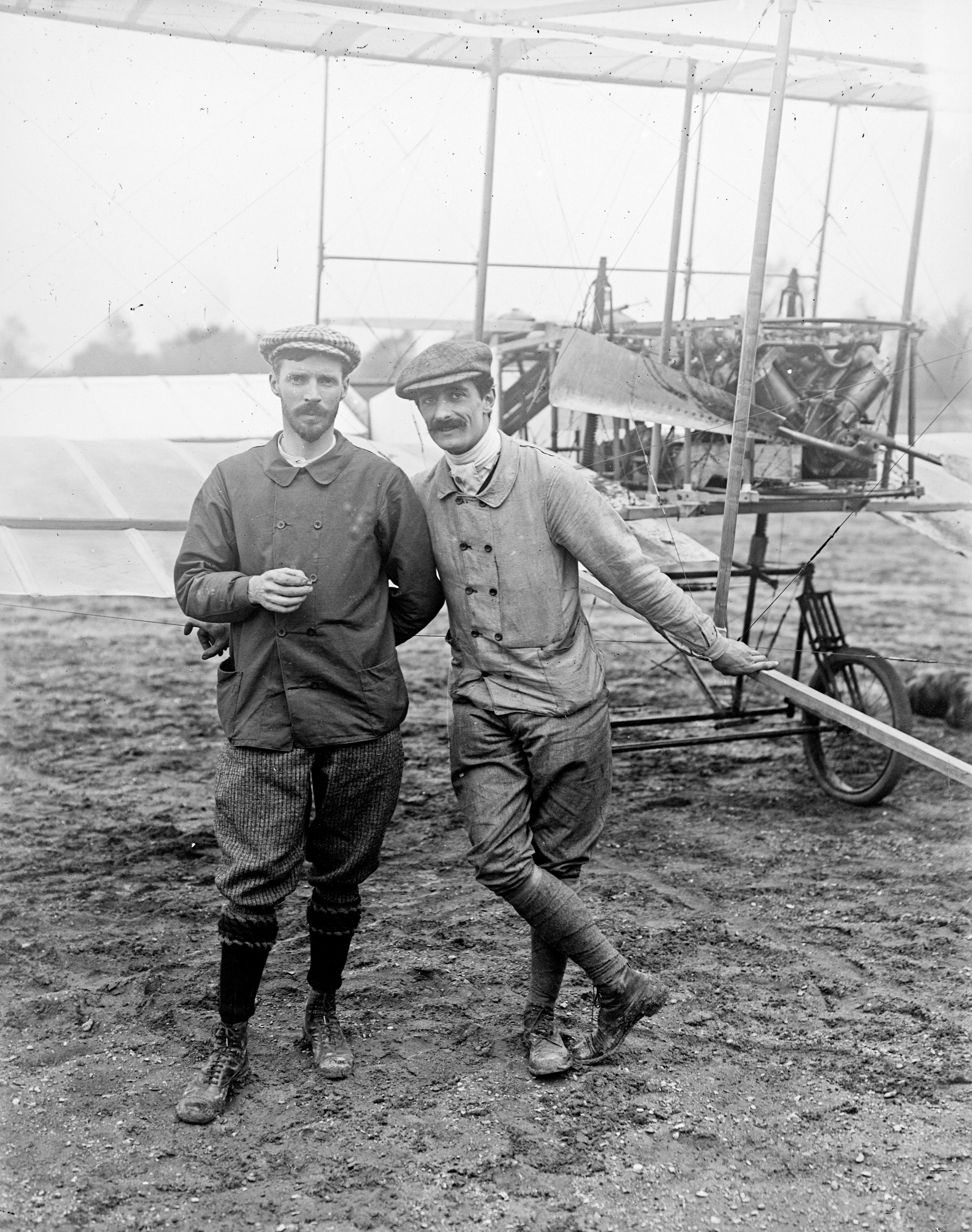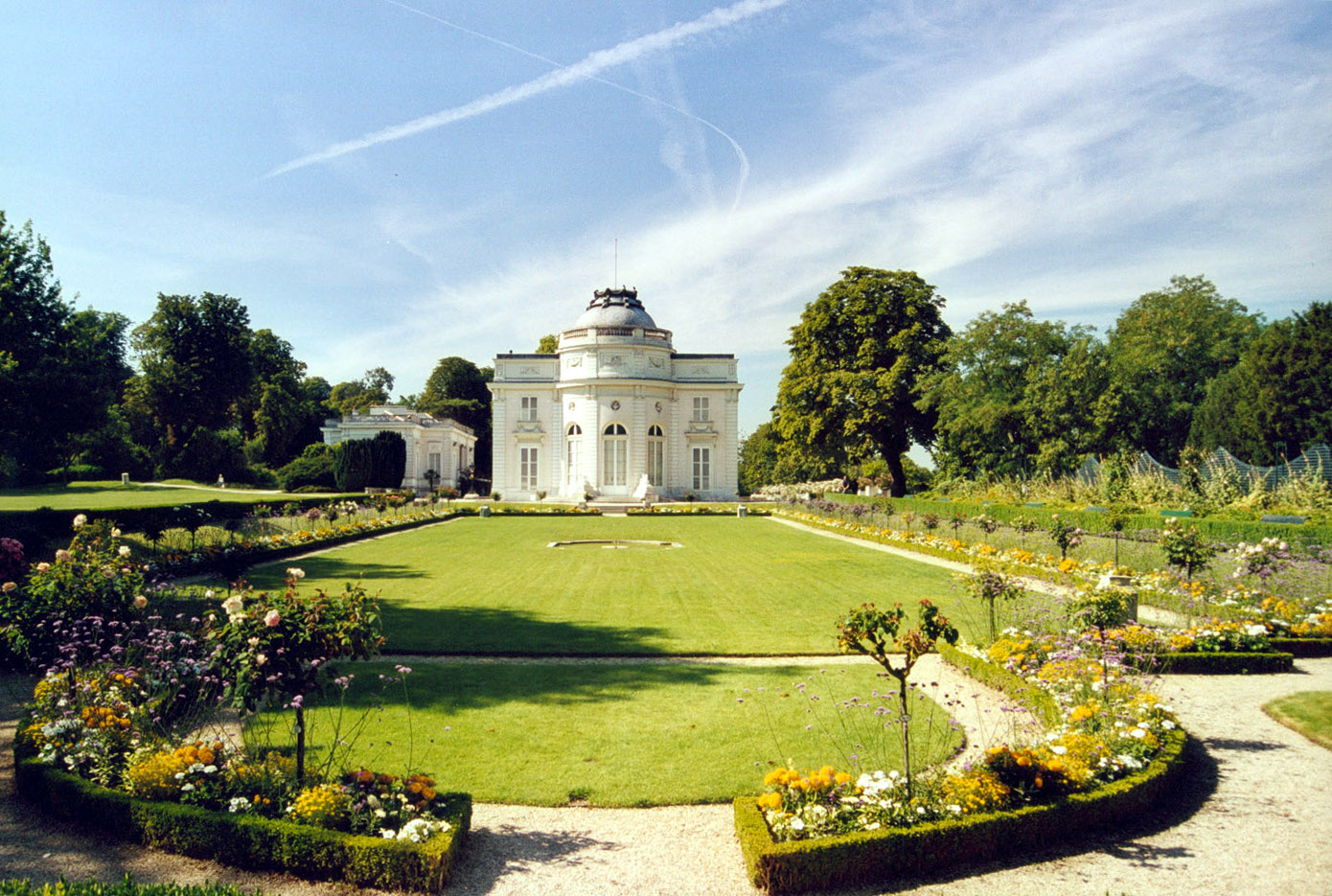|
14-bis
The ''14-bis'' (french: Quatorze-bis), (), also known as ("bird of prey" in French), was a pioneer era, canard-style biplane designed and built by Brazilian aviation pioneer Alberto Santos-Dumont. In 1906, near Paris, the ''14-bis'' made a manned powered flight that was the first to be publicly witnessed by a crowd. Background In June 1905, French aviator Gabriel Voisin had flown a glider towed by a fast boat on the river Seine, making a flight of over . The glider's wing and tail were made up of Hargrave cells, a box kite-like structure that provided a degree of inherent stability. This established the Hargrave cell as a configuration useful not only for kites but also for heavier-than-air aircraft. Santos-Dumont was living in Paris at the time, and was one of the most active "aeronauts" in Europe, having developed a series of non-rigid airships that displayed unparalleled agility, speed, endurance, and ease of control. Santos-Dumont met Voisin at the end of 1905, and commi ... [...More Info...] [...Related Items...] OR: [Wikipedia] [Google] [Baidu] |
Alberto Santos-Dumont
Alberto Santos-Dumont ( Palmira, 20 July 1873 — Guarujá, 23 July 1932) was a Brazilian aeronaut, sportsman, inventor, and one of the few people to have contributed significantly to the early development of both lighter-than-air and heavier-than-air aircraft. The heir of a wealthy family of coffee producers, he dedicated himself to aeronautical study and experimentation in Paris, where he spent most of his adult life. He designed, built, and flew the first powered airships and won the Deutsch Prize in 1901, when he flew around the Eiffel Tower in his airship No. 6, becoming one of the most famous people in the world in the early 20th century. Santos-Dumont then progressed to powered heavier-than-air machines and on 23 October 1906 flew about 60 metres at a height of two to three metres with the fixed-wing 14-bis (also dubbed the ''Oiseau de Proie''—"bird of prey") at the Bagatelle Gamefield in Paris, taking off unassisted by an external launch system. On 12 November in ... [...More Info...] [...Related Items...] OR: [Wikipedia] [Google] [Baidu] |
14-bis No Campo De Bagatelle
The ''14-bis'' (french: Quatorze-bis), (), also known as ("bird of prey" in French), was a pioneer era, canard-style biplane designed and built by Brazilian aviation pioneer Alberto Santos-Dumont. In 1906, near Paris, the ''14-bis'' made a manned powered flight that was the first to be publicly witnessed by a crowd. Background In June 1905, French aviator Gabriel Voisin had flown a glider towed by a fast boat on the river Seine, making a flight of over . The glider's wing and tail were made up of Hargrave cells, a box kite-like structure that provided a degree of inherent stability. This established the Hargrave cell as a configuration useful not only for kites but also for heavier-than-air aircraft. Santos-Dumont was living in Paris at the time, and was one of the most active "aeronauts" in Europe, having developed a series of non-rigid airships that displayed unparalleled agility, speed, endurance, and ease of control. Santos-Dumont met Voisin at the end of 1905, and commi ... [...More Info...] [...Related Items...] OR: [Wikipedia] [Google] [Baidu] |
List Of Santos-Dumont Aircraft
Through his career, aviation pioneer Alberto Santos-Dumont designed, built, and demonstrated a variety of types of aircraft—balloons, airships (dirigibles), monoplanes, biplanes, and a helicopter A helicopter is a type of rotorcraft in which lift and thrust are supplied by horizontally spinning rotors. This allows the helicopter to take off and land vertically, to hover, and to fly forward, backward and laterally. These attribu .... Research shows that the inventor may have created an even larger number of aircraft. List Notes References * * * * * * * * * * * * {{Santos-Dumont aircraft Santos-Dumont ... [...More Info...] [...Related Items...] OR: [Wikipedia] [Google] [Baidu] |
Gabriel Voisin
Gabriel Voisin (5 February 1880 – 25 December 1973) was a French aviation pioneer and the creator of Europe's first manned, engine-powered, heavier-than-air aircraft capable of a sustained (1 km), circular, controlled flight, which was made by Henry Farman on 13 January 1908 near Paris, France. During World War I the company founded by Voisin became a major producer of military aircraft, notably the Voisin III. Subsequently, he switched to the design and production of luxury automobiles under the name Avions Voisin. Early life Gabriel Voisin was born on 5 February 1880 in Belleville-sur-Saône, France, and his brother Charles Voisin, two years younger than him, was his main childhood companion. When his father abandoned the family his mother, Amélie, took her sons to Neuville-sur-Saône, where they settled near her father's factory. Their grandfather, Charles Forestier, took charge of the boys' education with military rigor. The boys also went for expeditions along th ... [...More Info...] [...Related Items...] OR: [Wikipedia] [Google] [Baidu] |
List Of Firsts In Aviation
This is a list of firsts in aviation. For a comprehensive list of women's records, see Women in aviation. First person to fly The first flight (including gliding) by a person is unknown. Several have been suggested. * In 559 A.D., several prisoners of Emperor Wenxuan of Northern Qi, including Yuan Huangtou of Ye, were said to have been forced to launch themselves with a kite from a tower, as an experiment. Only Yuan Huangtou survived, only to be executed later. * In the 9th century, the Andalusian Abbas ibn Firnas attempted a short gliding flight with wings covered with feathers from the Tower of Cordoba but was injured while landing. 00f./ref> * In the early 11th century, Eilmer of Malmesbury, an English Benedictine monk, attempted a gliding flight using wings. He is recorded as travelling a modest distance before breaking his legs on landing.William of Malmesbury – ed. and trans. R. A. B. Mynors, R. M. Thomson, and M. Winterbottom (1998–99). ''Gesta regum Anglorum ... [...More Info...] [...Related Items...] OR: [Wikipedia] [Google] [Baidu] |
Canard (aeronautics)
In aeronautics, a canard is a wing configuration in which a small forewing or foreplane is placed forward of the main wing of a fixed-wing aircraft or a weapon. The term "canard" may be used to describe the aircraft itself, the wing configuration, or the foreplane.. Canard wings are also extensively used in guided missiles and smart bombs. The term "canard" arose from the appearance of the Santos-Dumont 14-bis of 1906, which was said to be reminiscent of a duck (''canard'' in French) with its neck stretched out in flight. Despite the use of a canard surface on the first powered aeroplane, the Wright Flyer of 1903, canard designs were not built in quantity until the appearance of the Saab Viggen jet fighter in 1967. The aerodynamics of the canard configuration are complex and require careful analysis. Rather than use the conventional tailplane configuration found on most aircraft, an aircraft designer may adopt the canard configuration to reduce the main wing loading, to ... [...More Info...] [...Related Items...] OR: [Wikipedia] [Google] [Baidu] |
Aviation In The Pioneer Era
The pioneer era of aviation was the period of aviation history between the first successful powered flight, generally accepted to have been made by the Wright Brothers on 17 December 1903, and the outbreak of the First World War in August 1914. Once the principles of powered controlled flight had been established there was a period in which many different aircraft configurations were experimented with. By 1914 the tractor configuration biplane had become the most popular form of aircraft design, and would remain so until the end of the 1920s. The development of the internal combustion engine—primarily from their use in early automobiles even before the start of the 20th century—which enabled successful heavier-than-air flight also produced rapid advances in lighter-than-air flight, particularly in Germany where the Zeppelin company rapidly became the world leader in the field of airship construction. During this period aviation passed from being seen as the preserve ... [...More Info...] [...Related Items...] OR: [Wikipedia] [Google] [Baidu] |
Château De Bagatelle
The Château de Bagatelle is a small Neoclassical style château with several small formal French gardens, a rose garden, and an ''orangerie''. It is set on 59 acres of gardens in French landscape style in the Bois de Boulogne, which is located in the 16th arrondissement of Paris. There is also a located near Abbeville in northern France. Origins The château is a glorified playground, actually a ''maison de plaisance'' intended for brief stays while hunting in the Bois de Boulogne in a party atmosphere. The French word ''bagatelle'', from the Italian word ''bagatella'', means a trifle or little decorative nothing. Initially, a small hunting lodge was built on the site for the Maréchal d'Estrées in 1720. In 1775, the Comte d'Artois, Louis XVI's brother, purchased the property from the Prince de Chimay. The Comte soon had the existing house torn down, with plans to rebuild. Famously, Marie-Antoinette wagered against the Comte, her brother-in-law, that the new château ... [...More Info...] [...Related Items...] OR: [Wikipedia] [Google] [Baidu] |
Antoinette (manufacturer)
Antoinette was a French manufacturer of light petrol engines. Antoinette also became a pioneer-era builder of aeroplanes before World War I, most notably the record-breaking monoplanes flown by Hubert Latham and René Labouchère. Based in Puteaux, the Antoinette concern was in operation between 1903 and 1912. The company operated a flying school at Chalons for which it built one of the earliest flight simulators. Private engine-building venture Antoinette began as a private venture led by the engineer Léon Levavasseur and financed by Jules Gastambide, who owned an electricity generating station in Algeria. While on holiday with Gastambide and his family in 1902, Levavasseur expressed his interest in the emerging field of aviation and proposed the development of light, powerful engines for use in aircraft. Levavasseur then suggested to Gastambide's daughter, Antoinette, that the engines should be named after her. Gastambide financed the venture. Levavasseur patented the ... [...More Info...] [...Related Items...] OR: [Wikipedia] [Google] [Baidu] |
Pusher Configuration
In an aircraft with a pusher configuration (as opposed to a tractor configuration), the propeller(s) are mounted behind their respective engine(s). Since a pusher propeller is mounted behind the engine, the drive shaft is in compression in normal operation. Pusher configuration describes this specific ( propeller or ducted fan) thrust device attached to a craft, either aerostat (airship) or aerodyne (aircraft, WIG, paramotor, rotorcraft) or others types such as hovercraft, airboat and propeller-driven snowmobiles. "Pusher configuration" also describes the layout of a fixed-wing aircraft in which the thrust device has a pusher configuration. This kind of aircraft is commonly called a pusher. Pushers have been designed and built in many different layouts, some of them quite radical. History The rubber-powered "Planophore", designed by Alphonse Pénaud in 1871, was an early successful model aircraft with a pusher propeller. Many early aircraft (especially biplan ... [...More Info...] [...Related Items...] OR: [Wikipedia] [Google] [Baidu] |
L'Aérophile
''L’Aérophile'' ("The Aerophile") was a French aviation magazine published from 1893 to 1947. It has been described as "the leading aeronautical journal of the world" around 1910. History and contents ''L’Aérophile'' was founded and run for many years by Georges Besançon. In 1898 it became the official journal of the Aéro Club of France. Important developments in early aviation were documented in its pages: * Octave Chanute's April 1903 speech to the Aéro-Club describing the excitement of the gliding experiments done by his group in 1896/7 and of the Wright brothers was printed in April, 1903. Also Ferdinand Ferber's 1902 glider, the first in Europe modeled on those of the Wright brothers, was illustrated in the February 1903 issue. * The journal published illustrations of ailerons on Robert Esnault-Pelterie’s glider in June 1905, and the ailerons were widely copied afterward. * In December 1905 and January 1906 journal articles confirmed that the Wright b ... [...More Info...] [...Related Items...] OR: [Wikipedia] [Google] [Baidu] |
Wing Root
The wing root is the part of the wing on a fixed-wing aircraft or winged-spaceship that is closest to the fuselage The fuselage (; from the French ''fuselé'' "spindle-shaped") is an aircraft's main body section. It holds crew, passengers, or cargo. In single-engine aircraft, it will usually contain an engine as well, although in some amphibious aircraft t ...,Peppler, I.L.: ''From The Ground Up'', page 9. Aviation Publishers Co. Limited, Ottawa Ontario, Twenty Seventh Revised Edition, 1996. and is the junction of the wing with the fuselage (not with a nacelle or any other body). The term is also used for the junction of the wing with the opposite wing, ie on the fuselage centerline, as with the upper wing of a biplane. The opposite end of a wing from the wing root is the wing tip. The aerodynamic properties of the overall aircraft can be greatly impacted by the shaping and other design choices of the wing root. During both normal flight and landings, the wing root of an a ... [...More Info...] [...Related Items...] OR: [Wikipedia] [Google] [Baidu] |






_(9256079273).jpg)



